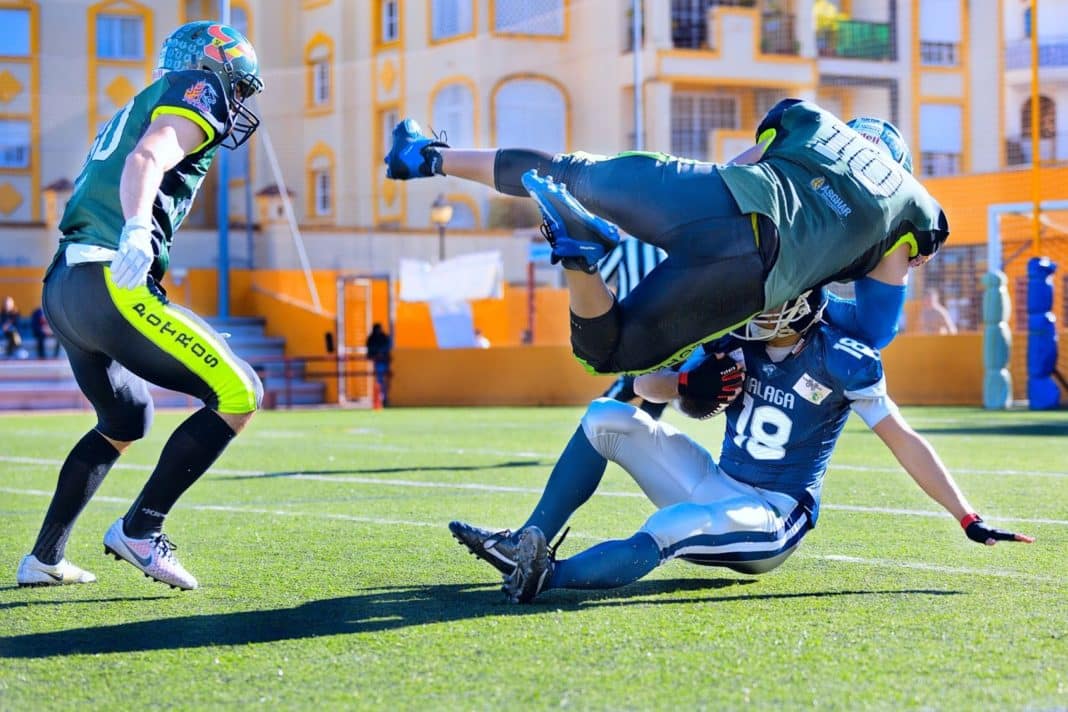Football is just one of the several sports one could take on if they’re looking for a hobby that requires physical strength, fun and is popular anywhere in the world.
Due to the stamina needed in playing the games, football coaches usually require their players to undergo intense training through using different training equipment such as tackle wheels. Coaches also asks their players to do single-leg squats, dumbbell bench step-ups, and more, which open the doors to various injuries imaginable.
Fortunately, there are proven preventive measures or exercises that both players and coaches alike could bear in mind to avoid accidents from happening, such as:
Rip
This exercise deals with a player throwing two uppercuts using their arms to secure their opponent in the tackle without having to swing or grab around the other’s arms. To do this, a football player should first get down to their breakdown position, making sure that their elbows are slightly bent.
After that, they’ll need to move their weights upward and forward through an uppercut motion that is leveled to their foreheads before gradually returning to their starting position.
Breakdown
The breakdown is the fundamental position in tackling, wherein the player’s feet are apart by at
least their shoulder width. It entails someone squeezing their shoulder blades to hold them down, with their hips and knees bent at a 45-degree angle and their hands in front.
Besides that, the “One-Arm Row” makes it easier to strengthen one’s muscles that are needed to get into a proper position for this exercise. The player should extend their elbow and have their shoulder blades be pulled back and down as they bend their elbow. Ideally, they should select the weights that could maintain the player’s current posture, such as having three sets of 10 repetitions.
Shoot
This exercise received its name because of the use or explosion of the hips. Generally regarded as an efficient approach in football tackling, coaches teach their players to familiarize themselves with the “Two-Handed Kettlebell Swing.”
In performing the activity, a player must use their kettlebell swing down between their legs while they bend the hips and knees and promptly put a lot of force in extending their hips to thrust the kettlebell upward and forward. Once the player successfully did so using their hips’ strength and not with their arms, tackling is likely to become an easier task for them than it used to be.
Hit position
This refers to properly positioning the body to ready it for the impact. A player should have excellent hips and leg strength to execute this action appropriately, which could, fortunately, be mended by taking “Walking Forward Lunge.”
If the player wants this to work well, they should raise their eyes and chin up at a 45 degree forward lean as they lunge forward. When the coach deems it necessary, players maybe even be obliged to wear a weighted vest or carry weight in front of them.
Buzz
For the NFL, balance makes a difference in the outcome of their games. So for this exercise, players would test their capacity to control their momentum or change direction while pursuing an opponent in the field.
In this case, the drill would begin with the players running toward their agility ladder, and once they reach it, they’ll have to move their feet in and out while bearing in mind to keep moving forward. As soon as they’re at the ladder’s end, then they’ll be instructed by the coach to either make a right or left before finally delivering the correct tackle on their tackling dummy.
Takeaway
By directing the appropriate warm-up drills for football players, a coach could minimize the risk of endangering their players’ health and avoid the possibility that their team member is sustaining an injury prior to a big sports event.
Above all, these activities ensure that proper rules are followed so that a player’s body can handle the required strength or endurance needed to complete the game without having to bar their muscles and other limbs.





